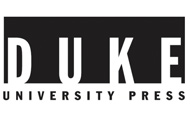
Duke University Press
Duke University Press is an academic publisher and university press affiliated with Duke University. It was founded in 1921 and it publishes approximately 150 books annually and more than 55 academic journals, primarily in the humanities and social sciences but is also particularly well known for its mathematics journals.
Listing elements from 1 to 12 to 3302 elements